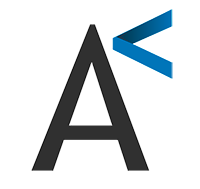Introducción
Creating an engaging and informative website for a science project is crucial in today’s digital age. A well-designed website can serve as a powerful tool to communicate complex scientific information, attract interest, and establish credibility. This guide will explore key elements in crafting a web design that not only captivates but also educates its audience, making your science project stand out in the digital realm.
Understanding Your Audience
Successful web design begins with understanding your audience. Are your visitors academics, industry professionals, students, or the general public? Each group has unique needs: academics might seek detailed research data, while the general public might prefer simplified explanations and engaging visuals. Tailoring your design to your audience ensures that your website effectively communicates your science project’s value and relevance. Consider surveys or user feedback to understand your audience better and adapt your design to their preferences and level of understanding.
Clarity and Usability
In scientific web design, clarity and usability are paramount. Users should easily navigate through your site and find the information they need without confusion. To achieve this, organize content logically, use clear headings, and implement a consistent layout throughout the site. A responsive design ensures your site is accessible on various devices, from desktops to smartphones. Additionally, minimize jargon and use plain language to make your content accessible to a broader audience. Interactive elements like dropdown menus and search bars can enhance user experience and engagement.
Visual Elements in Scientific Web Design
Visual elements play a crucial role in scientific web design. They can break down complex information and make it more digestible. Use high-quality images, informative diagrams, and explanatory videos to complement your text. These elements should add value to your content, not just aesthetic appeal. A thoughtful color scheme and readable fonts also contribute to the overall effectiveness of your design. Colors can be used to highlight important sections or data, while fonts should be legible and professional. Remember, the goal is to enhance user understanding and interest.
Interactive Features and Accessibility
Incorporating interactive features like animated graphs, interactive maps, or simulations can significantly enhance the learning experience. These features make abstract concepts more tangible and can increase user engagement. However, it’s essential to balance interactivity with accessibility. Ensure your website is accessible to users with disabilities by following web accessibility standards like WCAG (Web Content Accessibility Guidelines). This includes providing text alternatives for non-text content, ensuring ease of navigation, and making all functionality available from a keyboard.
Showcasing Data and Research Findings
Presenting data and research findings effectively is a vital component of a scientific web design. Infographics and interactive data visualizations can make complex data more approachable and understandable. Consider tools like D3.js for dynamic data visualization or platforms like Tableau for interactive dashboards. When presenting data, focus on clarity and relevance. Highlight key findings and provide context to help users understand the significance of the data.
Conclusión
The perfect web design for a science project balances aesthetic appeal with educational value. It should be clear, user-friendly, and tailored to your specific audience. By integrating compelling visuals, interactive features, and accessible design, you can create a website that not only informs but also engages and inspires. Remember, your website is a reflection of your project’s quality and credibility, so invest the time and resources to make it exceptional.

